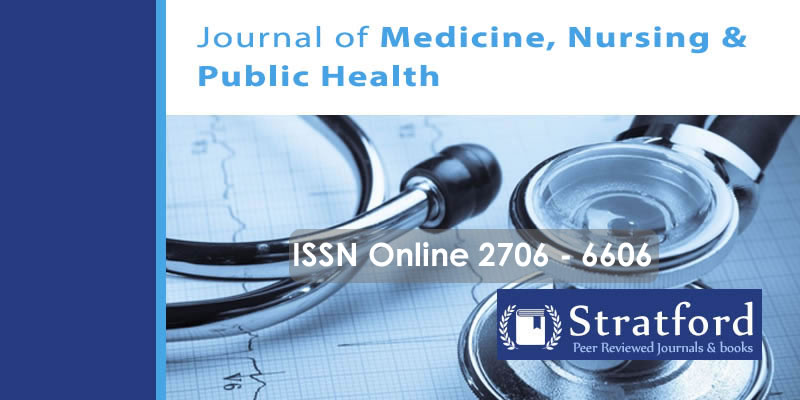Factors Influencing the Occurrence of Negative Health Effects Associated With Dry Cleaning Solvents
Keywords:
Health effects, dry cleaning solvents, health situation/exposure, knowledge of dry cleaning solvents, dry cleaning workersAbstract
This study sought to determine the health effects associated with exposure to solvents among dry cleaning workers in CBD, Nairobi. The specific objectives of the study included; to assess the health situation/exposure among the dry cleaning workers, to assess the knowledge of dry cleaning solvents among the dry cleaning workers, to assess the health effects of dry cleaning solvents among the dry cleaning workers, to establish the influence of demographic characteristics on the health effects of dry cleaning workers, to determine the influence of knowledge of dry cleaning solvents on health effects of dry cleaning worker and to establish the influence of health situation/exposure on the health effects of dry cleaning workers. The study found out that age was statistically associated with high negative health effects of the dry cleaning solvents, College level of education was statistically associated with high negative health effects of the dry cleaning solvents, University level of education was statistically associated with high negative health effects of the dry cleaning solvents, being an operator was statistically associated with high negative health effects due to the dry cleaning solvents. Loading clothes into the machine was statistically associated with high negative health effects of the dry cleaning solvents, removing clothes before the drying cycle is finished was statistically associated with high negative health effects of the dry cleaning solvents, transferring solvent-laden clothes into the dryer was statistically associated with high negative health effects of the dry cleaning solvents, changing the solvent filter was statistically associated with high negative health effects of the dry cleaning solvents, emissions coming from the dry cleaning process was statistically associated with high negative health effects of the dry cleaning solvents, emissions coming from the dry cleaning maintenance was statistically associated with high negative health effects of the dry cleaning solvents. Provision of nose masks was statistically associated with high negative health effects of the dry cleaning solvents. Getting first information from health workers was statistically associated with high negative health effects of the dry cleaning solvents, getting first information from TV and radio was statistically associated with high negative health effects of the dry cleaning solvents, getting first information from newspapers, publications and journals was statistically associated with high negative health effects of the dry cleaning solvents. Ability to recognize headaches as an early sign and symptom of dry cleaning solvent exposure was statistically associated with high negative health effects of the dry cleaning solvents, ability to recognize nose and eye irritation as an early sign and symptom of dry cleaning solvent exposure was statistically associated with high negative health effects of the dry cleaning solvents. The study concluded that majority of the respondents had been exposed to risk of using PERC solvents; therefore, the health situation among the workers working in dry cleaners was associated with high exposure to solvents. The study also concluded that the respondents were knowledgeable on the high exposure to solvents and finally the study led to a conclusion that high exposure to solvents led to health effects. The study recommends that the government should put more resources into helping dry cleaning workers understand the concerns of health effects due to PERC exposure or into helping to implement alternatives, even though this industry has the greatest need. The study also recommends the owners of the dry cleaners to provide the employees with protective garments as they will prevent from direct exposure of PERC solvent.
Keywords: health effects, dry cleaning solvents, health situation/exposure, knowledge of dry cleaning solvents, dry cleaning workers
References
American Conference of Government Industrial Hygienists. (1999) Threshold Limit Values for Chemical Substances and Physical Agents and Biological Exposure Indices Cincinnati: American Conference of Governmental Industrial Hygienists.
International Agency for Research on Cancer. (1995) “IARC monographs on the evaluation of carcinogenic risks to humans,” Tetrachloroethylene, vol. 63, pp. 159–221.
Sinczuk-Walczak H. (2008) Status of the nervous system and bioelectric activity of the brain in dry cleaning plant workers exposed to tetrachloroethylene. Med Pr; 39(2):91-9.
Costa C, Pasquale RD, Silvari M, Catania S. (2006) In vitro evaluation of oxidative damage from organic solvent vapors on human skin. ToxicolI Vitro; 20(3):324-31.
Zhu QX, Shen T, Ding R, Liang ZZ, Zhang XJ. (2006) Cytotoxicity of trichloroethylene and perchloroethylene on normal human epidermal keratinocytes and protective role of vitamin E. Toxicology; 209(1):55-67.
Tichenor, B. (1992) U.S. EPA Research on Dry cleaning Residual Reduction. Proceedings from the International Roundtable on Pollution Prevention and Control in the Dry cleaning Industry. Washington, DC: U.S. EPA Office of Pollution Prevention and Toxics, EPA/774/R- 92/002


